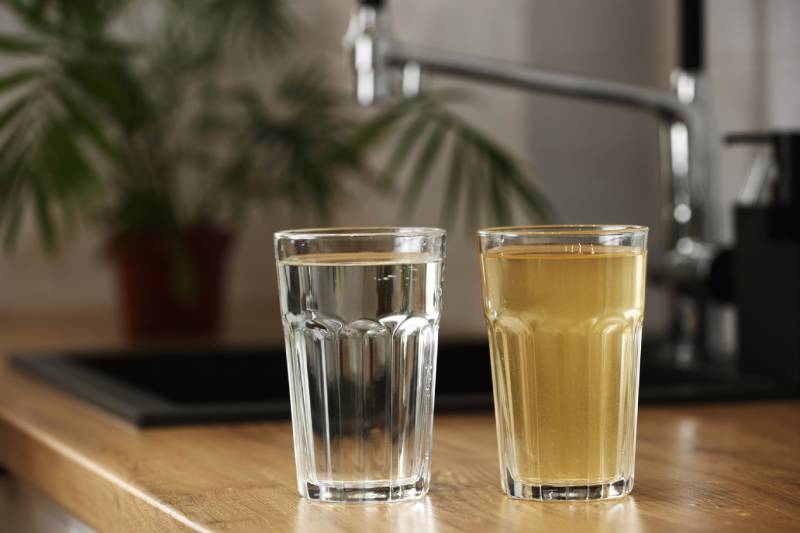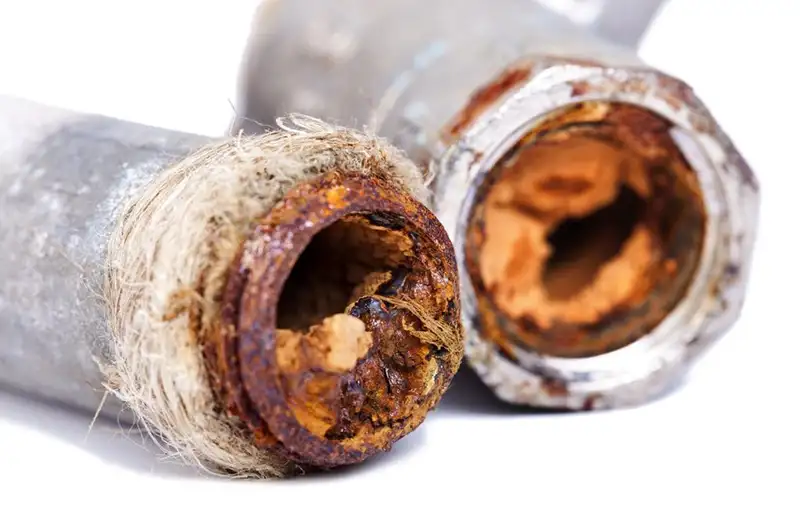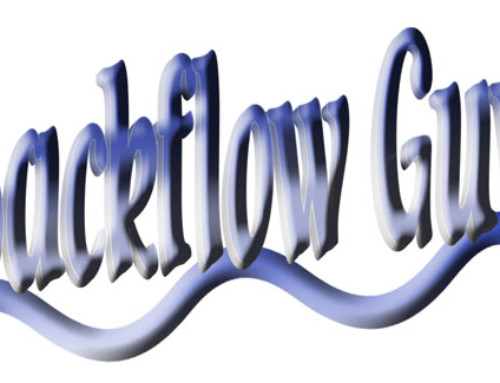What Are The Signs You Need A Backflow Repair?
I’ve seen it all when it comes to backflow issues, and let me tell you, there are a few telltale signs that it’s time to call in for a backflow repair. For starters, if you’ve noticed your water turning a funky color, that’s a strong hint that something’s gone awry—usually a sign of contamination from a pressure drop or some cross-connection issue.
If your tap water tastes off, like it’s been mingling with chemicals or sewage, that’s a big red flag that your backflow preventer might not do its job.
Then there’s the matter of your drains. If they’re sluggish or not draining well, your backflow device might be compromised, leading to nasty pipe buildups and unpleasant odors.
And those strange water pressure changes you’ve been experiencing? They could be caused by a blocked or leaky preventer, which could be causing trouble with your potable water supply.
If you frequently call the plumber, those pesky backflow issues may impact your check valves, setting the stage for potential reverse flow disasters.
To keep things running smoothly, keep up with regular backflow testing and bring in the pros when necessary. Watch for these signs, and you’ll be one step ahead in safeguarding your water system.
Key Points
As someone with my fair share of plumbing escapades, noticing discolored water is often a red flag for backflow issues. Trust me, you don’t want to ignore it because it could mean your water’s getting contaminated. Another telltale sign I’ve encountered is when the water starts tasting weird. That’s usually a sign that those backflow preventers are acting up and need some TLC.
And then there’s slow drainage. If you wait forever for the sink or bathtub to clear, it might be due to compromised backflow devices causing a buildup. Not fun. Unusual changes in water pressure? Yep, that’s often pointing straight to blocked or faulty backflow preventers.
Finally, suppose you’ve been calling the plumber more times than you’d like to admit. In that case, it might be time to consider whether underlying backflow problems are wreaking havoc on your plumbing infrastructure. It’s always better to catch these things early before they turn into a bigger mess.
Discolored Water
Hey there! So, if you’ve ever noticed your tap water looking a bit off—maybe with a slight tint or even turning brown or yellow—that’s usually a big red flag that something’s not quite right with your plumbing. Discolored water is often one of the first signs of a backflow issue. This generally happens when non-potable water sneaks into your clean water supply, often due to a pressure loss or a cross-connection problem.

Now, don’t just shrug it off. Discolored water could hint at more significant issues that need a good once-over. That’s where backflow testing steps in. Think of it as a health check-up for your plumbing system. We’ll look closely, especially at those backflow preventers and cross-connections, to ensure everything’s in tip-top shape. This testing is crucial because it ensures that your water flows in the right direction, keeping any nasty contaminants at bay.
If the tests show that backflow is indeed happening, it’s time to roll up our sleeves and get into some backflow repair work. This might mean swapping out faulty backflow preventers or patching up plumbing system parts that might cause trouble. Tackling the issue head-on with professional backflow repair clears up that discolored water and keeps you safe from health risks. It’s all about keeping your water supply clean and trustworthy!
Unpleasant Water Taste
Oh, the unexpected joy of turning on your tap and being greeted by water that tastes…off. If you’ve ever experienced a sudden, strange taste in your water, like it’s gone metallic or just plain unpleasant, it might be more than just your taste buds having a bad day. This could be a red flag for backflow issues in your plumbing system. Yeah, the kind where the water you trust to be clean and safe gets a bit too friendly with contaminants it shouldn’t be mingling with—think industrial chemicals, sewage, or organic gunk sneaking their way in due to cross-connection failures.
These taste changes aren’t just annoyances but crucial clues that something’s amiss. If you’re a homeowner or a property manager, it’s time to play detective. An odd taste often suggests that your backflow preventer—yep, that’s the little hero in your plumbing designed to stop water from flowing the wrong way—isn’t doing its job right. Maybe it isn’t very accurate, or perhaps it just needs some TLC.
Regular backflow testing is key to keeping your water tasting like water and not a science experiment. It’s all about ensuring these preventers are in tip-top shape, which is vital for avoiding potential health risks. So, what can you do? Embrace a solid backflow prevention game plan. Routine inspections and maintenance should be your go-to for maintaining water safety and quality. Trust me, your taste buds—and your health—will thank you!
Slow or Poor Drainage
When I noticed slow or poor drainage in my home, it hit me as a red flag for potential backflow issues lurking in my plumbing system. It’s like the water’s trying to tell me there’s a problem, and often, it’s due to a compromised backflow prevention device. This restricts water flow and causes a buildup in the pipes, almost like a traffic jam of cross-contaminants or debris. As these unwelcome guests pile up, they slow down wastewater movement, making the drainage delays too noticeable.
And let me tell you, when foreign elements sneak into the system, they can further speed up corrosion or damage the pipes, making the flow issues even more persistent. But here’s the kicker: one of the telltale signs of backflow is odd smells wafting through the house, often sulfurous or sewage-like. Knowing what a backflow smells like can help pinpoint where things are going awry.
Getting an accurate diagnosis is crucial, so scheduling backflow testing is necessary. This involves a professional coming over to assess the backflow prevention assemblies, ensuring everything’s up to code and working as it should be. If problems do pop up, the repair costs can vary, depending on how bad the damage is and what needs fixing. Tackling slow drainage and related issues can prevent more significant problems and improve my water quality.
Unusual Water Pressure
Let’s chat about something that might seem mundane but is super important—unusual water pressure in your home. Like slow drainage, which can hint at hidden problems, those weird water pressure changes often indicate something’s up with your plumbing, particularly your backflow prevention device.
Backflow preventers might not be the most glamorous part of your plumbing system, but they play a crucial role. They keep your clean, drinkable water safe by stopping any potentially contaminated water from flowing back into it. When these little gadgets go on the fritz, you might notice your water pressure acting all wonky. This could be a heads-up for more significant plumbing issues down the road.
For instance, if you suddenly find yourself with low water pressure, it could mean your backflow preventer is blocked, cutting down the water flow. Conversely, the pressure relief mechanisms might not work if the pressure is too high, leading to serious problems like pipe bursts or leaks. And let’s not forget: These pressure changes can mess with your daily routine and even risk mixing non-drinkable water with your clean supply—not something you’d want!
To tackle these issues, professionals often use pressure gauges to determine what’s going on with your backflow preventer. Regular testing (usually required by local laws) ensures these devices are working correctly, which is key to preventing any health hazards from water contamination. So, if you notice any odd water pressure behavior, it’s wise to get it checked out. It could save you a bundle on repairs and keep your water safe.
Frequent Plumbing Repairs
I’ve noticed that frequent plumbing repairs can be a red flag for underlying backflow issues. This is especially concerning when these repairs keep addressing the same old leaks, pipe bursts, or drainage problems. I’ve learned that these persistent issues often stem from compromised backflow prevention measures. And trust me, that’s not something you want to ignore, as it can lead to contamination risks and even damage your infrastructure.
The culprits are usually inadequate backflow preventers, like faulty check valves or missing air gaps, which can cause reverse flow and introduce contaminants into your potable water supply. Regarding cross-connection control, it might be time to check if your backflow prevention assembly is on the fritz if you’re dealing with frequent plumbing headaches. This could mean conducting backflow testing to ensure everything is up to par.
And let’s not forget about those telltale signs like sewer backups, discolored water, or that unmistakable foul odor. These could be screaming “backflow issues,” demanding immediate attention and regulatory compliance to prevent health hazards.
Connecting the dots between frequent plumbing problems and potential backflow issues is crucial for those managing properties or running businesses. Regular maintenance and timely backflow repairs aren’t just about avoiding property damage—they’re about staying on the right side of legal compliance, too. Bringing in a certified pro to give your plumbing system a once-over can save you from costly repairs down the road and keep your water supply safe and sound. Ultimately, it’s all about preserving the integrity of our water infrastructure and protecting public health.

